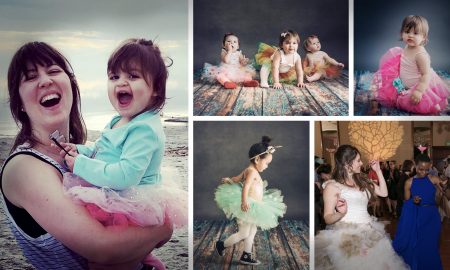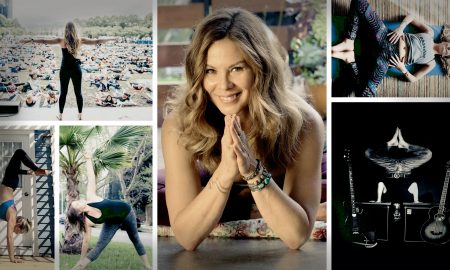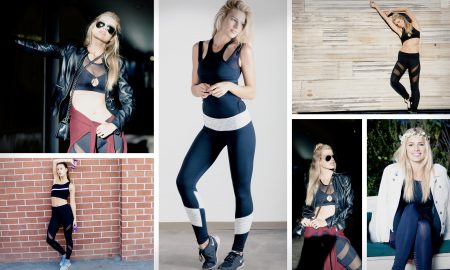

Today we’d like to introduce you to Jiwon Ham.
Hi Jiwon, so excited to have you with us today. What can you tell us about your story?
I’ve always been drawn to interactive art installations, especially those involving digital screens and video projections. My journey began as a 2D motion graphics artist, experimenting with simple shapes and bold colors to tell compelling stories. Early in my career, I had the opportunity to showcase motion works on large-scale digital screens in public spaces across South Korea. One of the most exciting projects I worked on was creating a video for a transparent exterior screen on a hockey arena during the 2018 PyeongChang Winter Olympics.
As I gained more experience with public media displays, I began asking myself, “How can I create more meaningful, engaging moments beyond simply watching a screen?” This question led me to Chicago, where I pursued an MFA in Art and Technology / Sound Practices at the School of the Art Institute of Chicago. During the program, I explored projection mapping, 3D animation, and real-time rendering to craft interactive digital artworks. I especially loved designing immersive experiences that allowed audiences to feel as if they were stepping into digital environments brought to life by multiple projectors.
In 2020, I joined Red Paper Heart, an interactive experience design studio in New York. Here, I’ve been expanding my expertise in creating immersive, interactive digital art experiences from concept through execution. Our projects integrate cutting-edge technologies—AI, generative art, motion tracking, projection mapping, and real-time data visualization—to create interactive art installations. Working alongside an amazing team, my role involves designing sophisticated visual systems realized through custom software development and crafting carefully tailored user experiences in physical spaces.
For me, the most rewarding part is imagining how audiences will react to the artwork and then seeing their responses match (or even exceed) what I envisioned. Moments like these keep me inspired and excited about what’s next.
Can you talk to us a bit about the challenges and lessons you’ve learned along the way. Looking back would you say it’s been easy or smooth in retrospect?
I’ve always been passionate about creating digital artwork. While I enjoy working on commercial projects with specific client requirements, I also value dedicating time to my personal art practice to refine my style and tell my own stories.
Balancing these two areas hasn’t been easy. Juggling multiple projects often left me feeling anxious and overwhelmed—like I was constantly running out of time. At one point, I felt compelled to put everything else in my life aside, which led to burnout and moments of doubt about whether I was on the right path.
To address this, I began focusing on using my limited time more effectively. Over the past few years, I’ve developed a simple system with four steps: Planning, Doing, Tracking, and Reviewing. Every Friday, I plan for the coming week by breaking down large tasks into smaller, achievable goals and prioritizing them. Tackling these goals one step at a time keeps me motivated and prevents that sense of overload. I track my progress using a playful Google spreadsheet I designed, along with apps like TickTick and Notion, which provide helpful analytics for reviewing my activities.
Time used to feel abstract and chaotic, but this system has given me structure and confidence—like having a personal secretary guiding me each hour. Reflecting on my progress and insights has not only improved my productivity but also strengthened my connection to my goals and passions.
Thanks – so what else should our readers know about your work and what you’re currently focused on?
In my art practice, I tell stories through minimal forms on screen, using particles and pixels as my core ingredients. These elements, the smallest units of digital media, are like atoms in the physical world. I’m fascinated by how particles gather into shapes, disperse, and then reassemble into new forms. Their movement evokes both natural phenomena and urban life: the formation of clouds in the sky, the synchronized migration of birds, or the ebb and flow of crowds in a bustling train station.
One of my recent works, Dreaming with AI (2023), explored the relationship between virtual space and the city of Seoul through generative pixel simulations. Collaborating with a software developer, I used a cellular automata algorithm to animate thousands of pixelated images of Seoul generated by Stable Diffusion. This constantly evolving simulation was displayed on a 173-foot-long screen at Gwanghwamun Media Square, right in the heart of the city. It was thrilling to see fragments of AI-generated conversations and pixelated imagery become part of the urban landscape.
In September, I participated in LUMINEX 3.0, a public art exhibition in Los Angeles. My piece, Pattern City (2024), featured in the BYOB (Bring Your Own Beamer) section organized by LAVA (Los Angeles Video Artists), is a generative art that builds a square grid block-by-block to form an abstract cityscape. Inspired by LA’s architectural and graphic elements—building grids, windows of highrise buildings, and ventilation slats—I collaborated with a software development partner to create an algorithm generating an ever-evolving, real-time pattern.
For this installation, we mapped the work onto a building wall in the alley behind the Morrison Hotel in Downtown LA. Setting up projectors, calibrating the mapping, and updating the code in real time while hundreds of people walked by was challenging, but seeing the abstracted LA cityscape come to life in its own environment made it all worthwhile.
Currently, I’m exploring real-time generative systems in Unreal Engine and TouchDesigner, aiming to integrate direct user interactivity into my future projects. I’m excited to create immersive digital art experiences that connect audiences with my work in meaningful ways.
Any advice for finding a mentor or networking in general?
For me, mentors often come from the people closest to me—friends, coworkers, and the creative communities I’ve been fortunate to find. In LA, I’ve been lucky to meet incredible media artists who have become informal mentors through shared experiences and collaborations.
One of the best places I’ve found for networking and learning is Digitalk Sessions, organized by Lara Milhazes (EYEON.VJs). These gatherings bring together artists working at the intersection of visual art and technology. During the sessions, artists share their creative processes, discuss their practice areas, and provide insights into their work. It’s also a great opportunity to discover weekly art events and even spark collaborations on new projects.
When I first moved to LA, the city’s vastness felt isolating. Finding this community completely transformed my experience, making my life here more vibrant and inspiring. My advice for finding mentors or building a network is to seek out spaces where like-minded people gather, remain open to sharing your own journey, and stay eager to learn from others. Mentorship often develops naturally in environments where creativity and collaboration flourish.
Contact Info:
- Website: www.jiwonham.com
- Instagram: www.instagram.com/jiwonhaam
- Linkedin: www.linkedin.com/in/jiwonham






Image Credits
Profile picture by Dongmyeong Kim, Artwork pictures: courtesy of the artist, Dongmyeong Kim, and Yuhwan Kang











